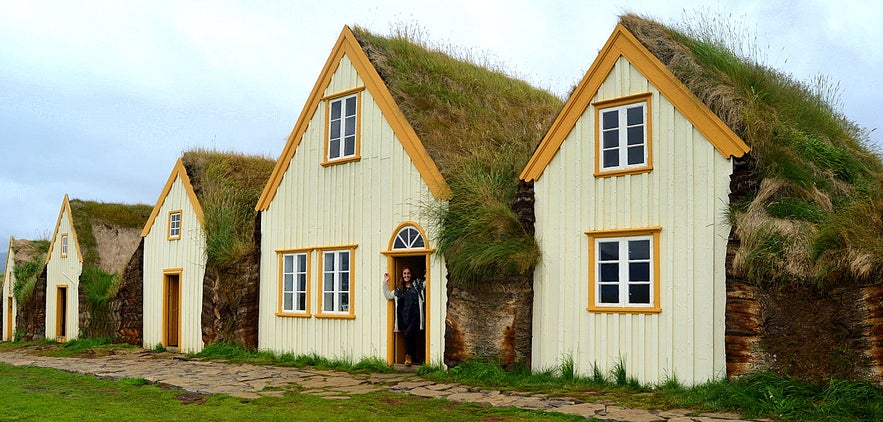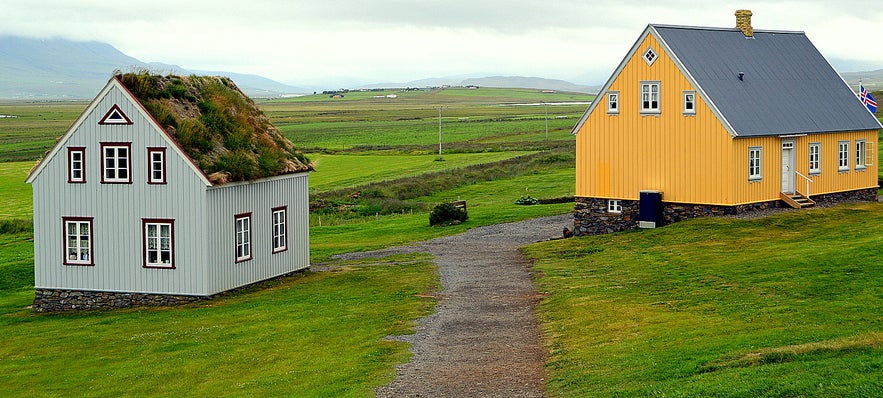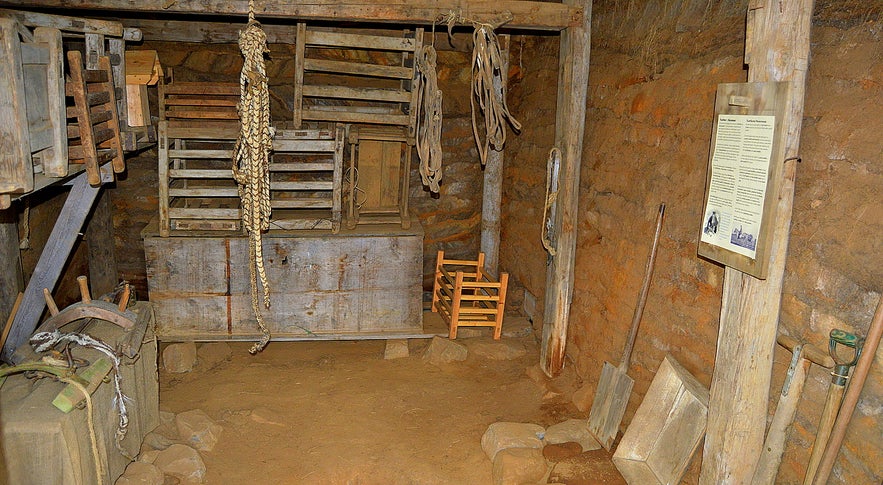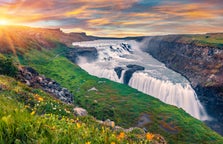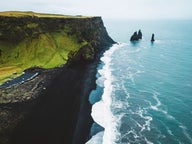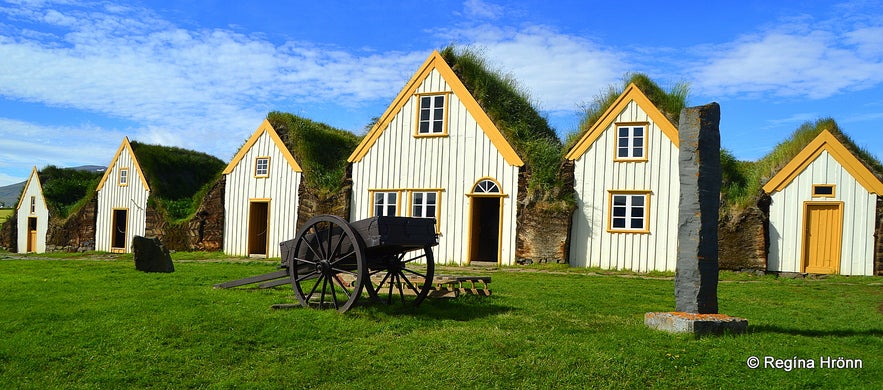
As you might have noticed from my previous travel-blogs, then I adore turf houses. Whenever I travel around Iceland I seek out turf houses and turf churches, they are just so characteristic of my country.
Everybody lived in a turf house in Iceland, both rich and poor and there are still several turf houses in Iceland, most of which have been preserved.
There is a lovely historic turf house in Skagafjörður in North Iceland, called Glaumbær farm, which should not be missed while travelling in this area.
Top photo: Glaumbær Turf House in North Iceland
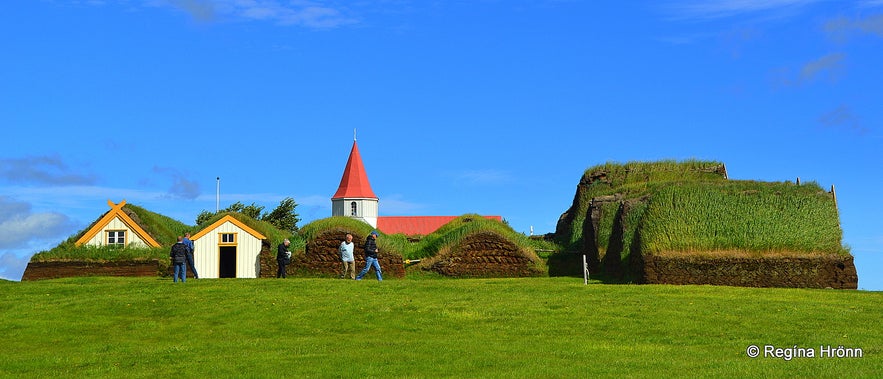
Glaumbær turf house in North Iceland
A farm has stood on this site since the settlement of Iceland in the year 874 - give or take a few years, and people lived in Glaumbær turf house until 1947.
The present farmhouse consists of 13 buildings and the "newest" addition to the turf house was built in 1876-1879. The oldest parts of the turf house date back to the mid-18th century.
In 1947 Glaumbær was declared a protected site and is now owned by the National Museum of Iceland. It has been run as a museum by the Skagafjörður Heritage Museum since 1952.
Glaumbær turf house
When you visit the Glaumbær turf house and have a look inside, you can see how life in Iceland was back in the 18th and 19th centuries.
Glaumbær is quite a historic farm, as here lived Snorri Þorfinnsson and his parents in the 11th century (around 1010).
Snorri is most likely the first European child to be born in America while his parents were on exploration in this part of the world long before Columbus discovered America.
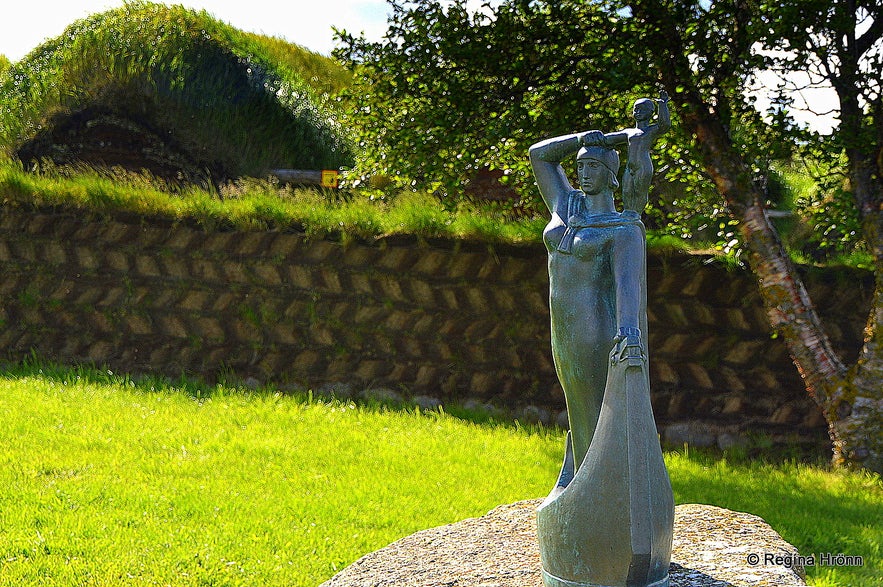
The statue of Guðríður at Glaumbær was made in 1938 by Ásmundur Sveinsson
Snorri's mother, Guðríður Þorbjarnardóttir, was the widow of Þorsteinn, who was Erik the Red's son and the brother of Leif the Lucky, who discovered America.
Guðríður then married Þorfinnur karlsefni and had Snorri by him in what is now called Newfoundland.
Guðríður had emigrated to Greenland with her parents, and Guðríður and Þorfinnur meant to settle in Vínland as they called it back then.
But there were conflicts with the locals so after one winter they had to return.
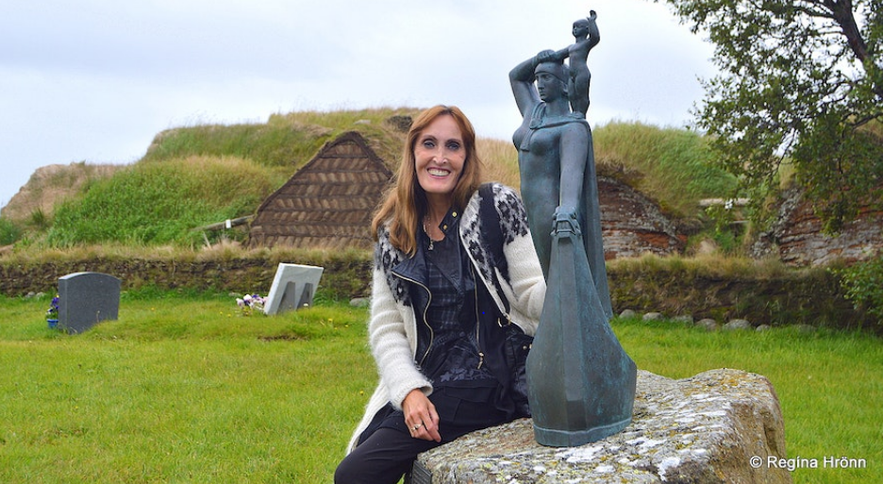
Guðríður is considered to be the most widely travelled woman in Iceland in the middle ages.
She made 8 sea journeys and crossed Europe twice on foot.
You can read more about these people in the Saga of Erik the Red and Grænlendingasaga.
So one can see that some very well-known characters in Icelandic history lived on Glaumbær farm.

At Laugarbrekka on the Snæfellsnes peninsula, where Guðríður was born, you will see the same statue of Guðríður and her son.
I have written about these people in another travel-blog: The Historic Laugarbrekka on the Snæfellsnes Peninsula and Guðríður Þorbjarnardóttir.
Þorfinnur karlsefni was from Reynistaður close by Glaumbær, which was back then called Staður in Reynines, and when they returned to Iceland they lived at Reynines for a while.
It is not certain when they started living at Glaumbær, but after his father had passed away, Snorri lived at Glaumbær and built a church there.
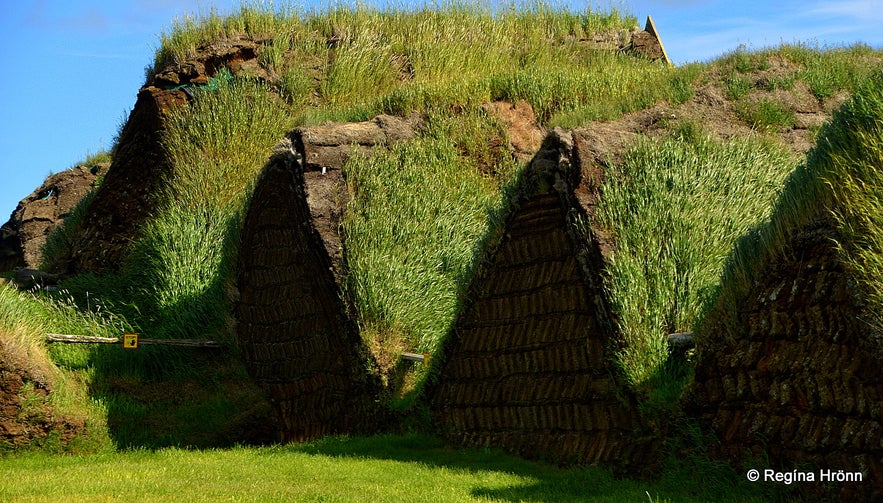
Glaumbær turf house
At Glaumbær you will also find 2 timber houses on the museum ground, one is called Gilsstofa, and the other one Áshús.
Gilsstofa contains the offices of the museum and a museum store and in Áshús there are exhibitions on housekeeping in the first decade of the 20th century.
Gilsstofa and Áshús
Gilsstofa is a reconstruction of a house from 1849, which shows us what a wooden sitting room was like in the middle of the 19th century.
These kinds of houses were added to turf houses before wooden houses were built in the late 19th century. They could be moved between farms and Gilsstofa was moved 6 times.
Áshús was built in 1884-1886 and shows the building style that took over following the turf houses.
Glaumbær turf house
Viking ruins have been discovered at Glaumbær, some 150 meters east of the current turf farm.
A 30-meter-long Viking-age longhouse from the 11th century was found, as well as some other smaller structures.
I have written another travel-blog about the Viking ruins that I have visited in my country: Ancient Archaeological Viking Ruins I have visited on my Travels in Iceland.
It is lovely visiting Glaumbær, just like stepping back in time, so I recommend stopping here and having a look around.
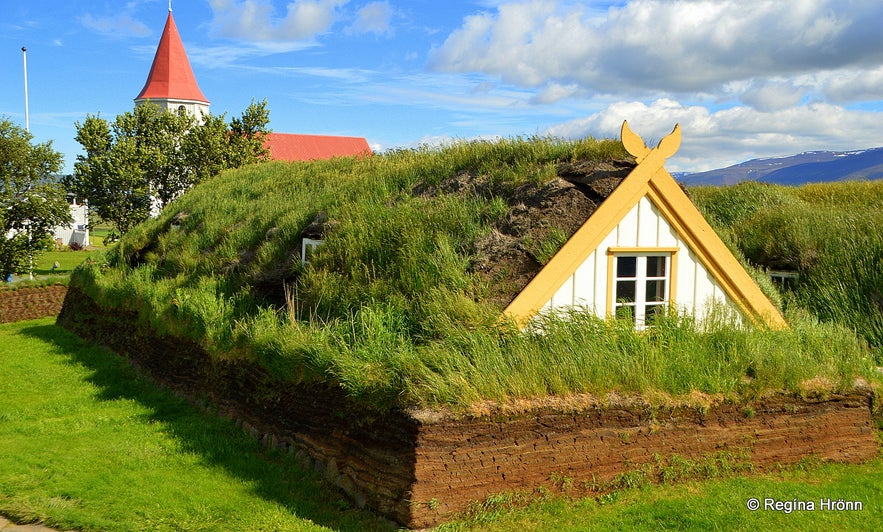
Glaumbær turf house
For opening hours and admission fees check the Glaumbær farm website.
There is a limit though to how many people can fit in a turf house at the same time and how much intrusion these old turf houses can handle, so let's treat them with respect and tread lightly.
Here is the location of Glaumbær on Google maps.
If you are interested in turf houses then I have written another travel-blog:
A List of the beautiful Icelandic Turf Houses, I have visited on my Travels in Iceland

Glaumbær turf house
I have written 2 other travel-blogs about Skagafjörður:
The Bloody Viking Battles in Skagafjörður, North Iceland in which I tell you about the atrocities and heart-breaking battles that took place in Iceland during the Age of the Sturlungs, many of which took place here in Skagafjörður.
Víðimýrarkirkja Turf Church in Skagafjörður - is it the most beautiful of them all where I show you one of the few remaining turf churches in Iceland, a pretty little gem in Skagafjörður.
Have a lovely time at Glaumbær and in Skagafjörður :)


